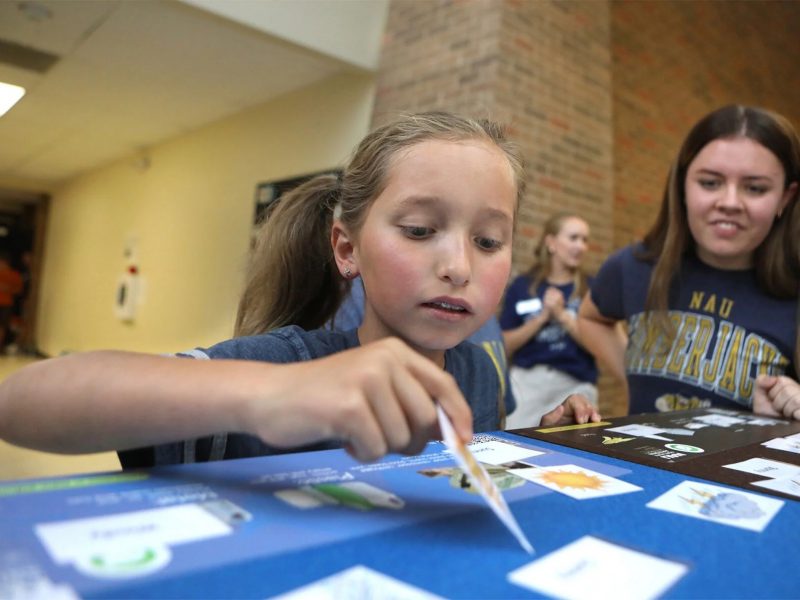New day camp works to bring awareness to the needs of dyslexic children in Flagstaff | Arizona Daily Sun
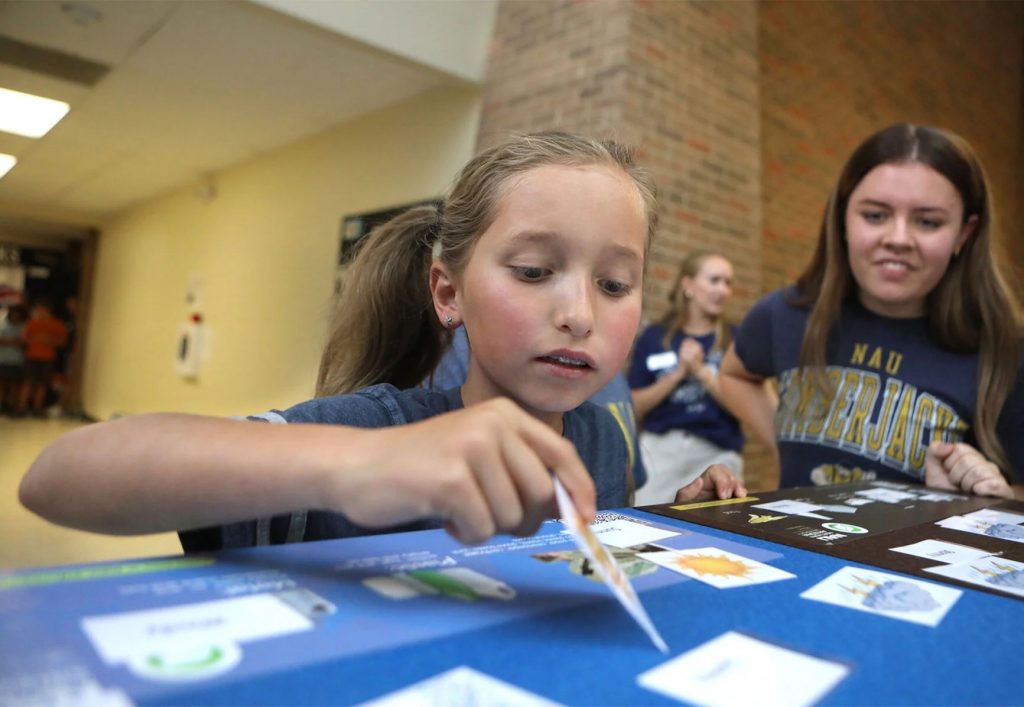
Speech pathologist Heather Beall-Caska decided to take a leap of faith and launch her vision of a dyslexia reading camp in Flagstaff.
It recently wrapped up its first summer session, a program called Reading Between the Pines.
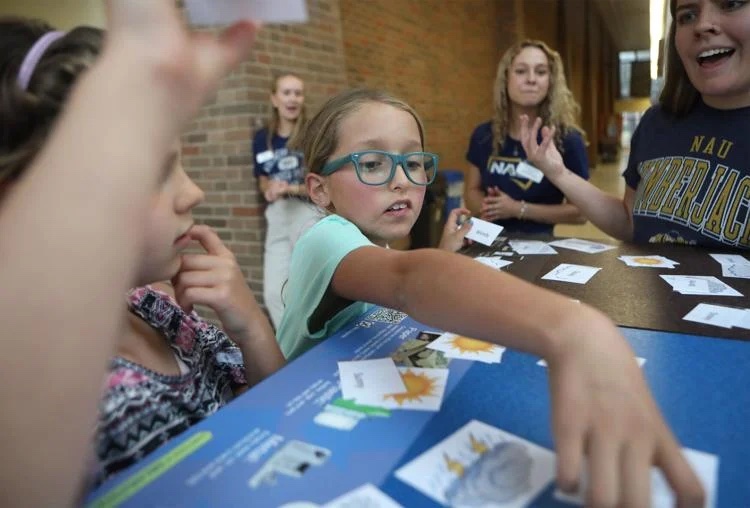
Beall-Caska moved to Flagstaff last summer after accepting a position at Northern Arizona University as an assistant clinical professor, but prior to that she was working as a speech-language pathologist specializing in dyslexia and reading disorders. During her interview for the NAU position, Beall-Caska shared her dream of starting Reading Between the Pines.
After collaborating with colleague Lorette Bourdages Shea, Beall-Caska felt confident enough to open the first summer of the reading camp this year.
Reading Between the Pines is geared toward children diagnosed with dyslexia or anyone who struggles with learning to read, write or spell. Beall-Caska is passionate about working with dyslexic children and breaking down barriers for them when it comes to finding resources in northern Arizona.
“There’s such a misconception about what dyslexia is and what these students need, and it’s gaining traction, the awareness of dyslexia. But not here,” Beall-Caska said. “Overall, there is such a need for health care and educational support, so my goal was to bring something here where it’s needed, and there’s not a lot of services that offer it.”
This first summer of the reading camp was a pilot year for Beall-Caska and her team to experience how the camp would run. So, to keep capacity manageable, registration was only open to 10 clients for the in-house dyslexia clinic at NAU.
At Reading Between the Pines, students started the beginning of their days with an activity with the neighboring reading camp, Camp Chit-Chat, then each camper had a one-on-one 45-minute session with their student clinicians. These sessions happened twice a day to maximize support for the campers’ development.
“I do like that model, because they’re still getting to do fun camp-like activities but getting intensive intervention,” Beall-Caska said.
So far, Beall-Caska said, she is amazed with how the camp has come together, and students have been buzzing about their experiences.
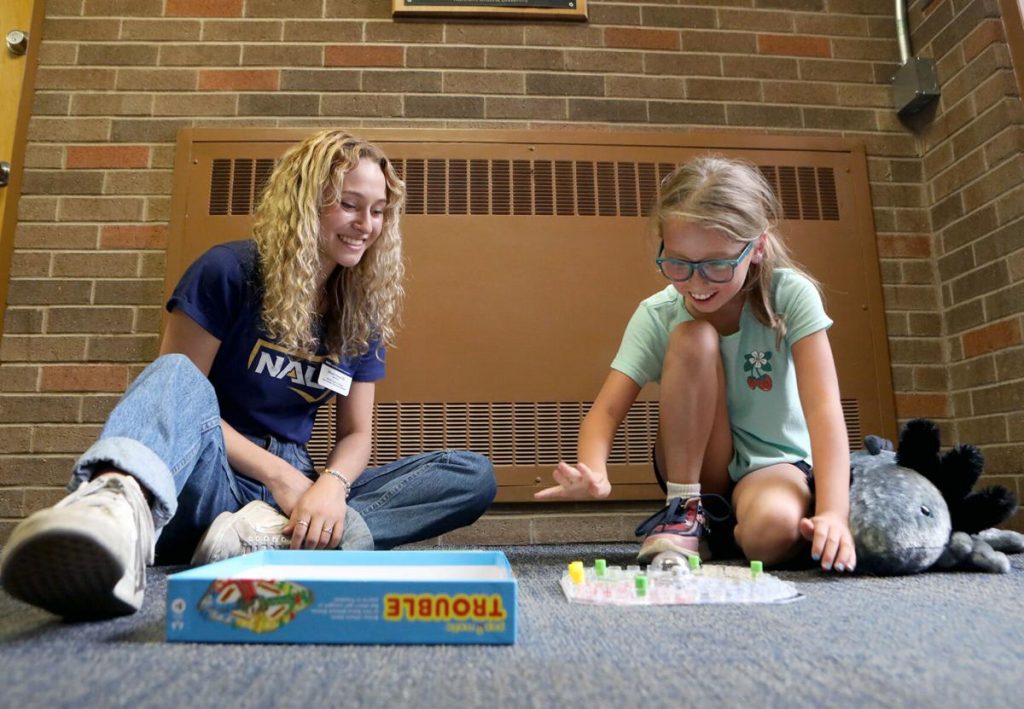
Campers’ insight
Evie and Ella Lewis are twin sisters and participants of Reading Between the Pines. Their mother, Maggie Lewis, has been registering them in programs like the reading camp and NAU’s dyslexia clinic to help her daughters after their diagnosis.
During the regular school year, the twins visit the dyslexia clinic for their reading lessons. Maggie Lewis, however, didn’t want them to lose their progress over summer, so she registered them for the camp once she heard about it through NAU.
“Here they get six sessions a week versus two, because they’re doing two [sessions] each camp day,” she said. “I don’t think they feel like they’re doing a lot of work. They think they’re having fun, so it’s great.”
Both girls said they’ve not only had a lot of fun getting to meet new campers and join in on activities, but also their reading skills have improved.
Ella has enjoyed participating in all of the activities with the friends she made, and the most helpful part of camp was learning how to read big words. Evie said she liked being able to bring her personal books to read for the one-on-one sessions and spending time with her clinician has been a highlight, too.
“It’s been really fun,” Evie said. “Since I’ve been at this camp, I’ve been learning better about reading, so now I pretty much can read by myself.”
Unlike a classroom setting, Reading Between the Pines gives the twins the freedom to stay active throughout the day with their fellow campers rather than sitting at a desk while still supplementing their growth with creative reading activities.
“I like all the activities that we do,” Ella said. “I like the scavenger hunt and obstacle course.”
Maggie Lewis said the one-on-one sessions in particular were one of the activities the girls enjoyed and benefited from the most because of the dedicated personal instruction.
“They love their one-on-one instructors; they get a lot of attention from them,” she said. “They are really engaged with them, playing with them and letting them bring their own books. They make reading fun.”
As a mom, Maggie Lewis tries everything she can to make reading fun for her girls and improve their development in a way that’s engaging. Because of Reading Between the Pines, she is happy to see the twins have a good learning experience and get excited about reading.
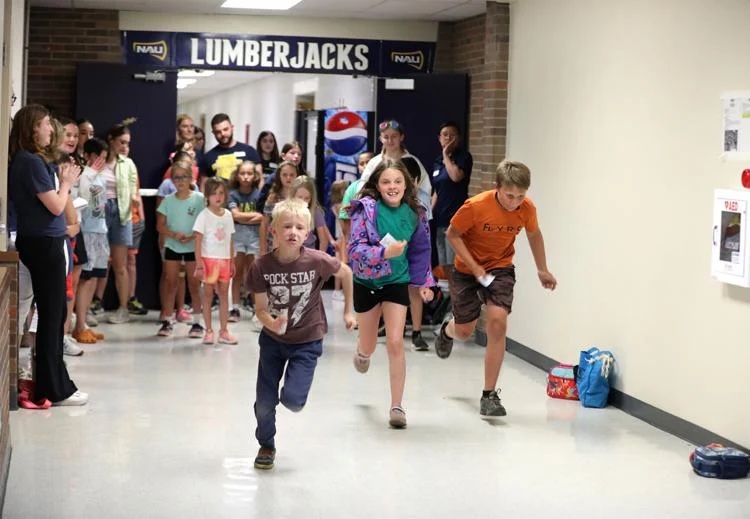
Clinical practice for NAU students
Reading Between the Pines wouldn’t be possible without the help of the clinical students at NAU who ran the program throughout the day, from outside activities to the intensive one-on-one sessions.
Beall-Caska is in charge of clinical education for the graduate program at NAU. She places students in their clinic rotation throughout the two-year program, with Reading Between the Pines being one of the placements.
Including graduate students and finding a way to give them experience for their degrees was one of Beall-Caska’s goals when she opened the camp, because she wanted to support them just as much as the campers in building their confidence and giving them the tools to be successful.
All the graduate students are required to do clinical education and meet 400 hours of service for the American Speech Language Hearing Association (ASHA), which certifies speech-language pathologists. According to Beall-Caska, the reading camp is a great place for graduate students to meet peers and gain more experience in speech pathology.
“Camp itself is such a great first clinical experience because they’re doing it collaboratively,” Beall-Caska said. “They’re with other clinicians who are in the same boat, so I think bouncing ideas off each other, they’re getting the opportunity to not only work with their client but with other clients and simulate that group studying.”
Each clinical student follows the Science of Reading when creating curriculum for one-on-one sessions. The Science of Reading is a novel written by Italo Calvino in 1979, and it includes research breaking down how students learn to read and write. The camp uses an evidence-based intervention called structured literacy and uses a specific system, the Barton Reading and Spelling system as well as the Orton-Gillingham approach when conducting interventions with students.
The professor credits the dedication and hard work from the graduate students for the positive feedback the camp has been receiving and the improvement in students, saying their contributions to the camp is what she is most proud of.
“We guide them, but they’re the ones that are designing everything,” Beall-Caska said. “They are the ones picking the themes for the week, creating lesson plans and creating all the materials. That has been incredible to watch.”
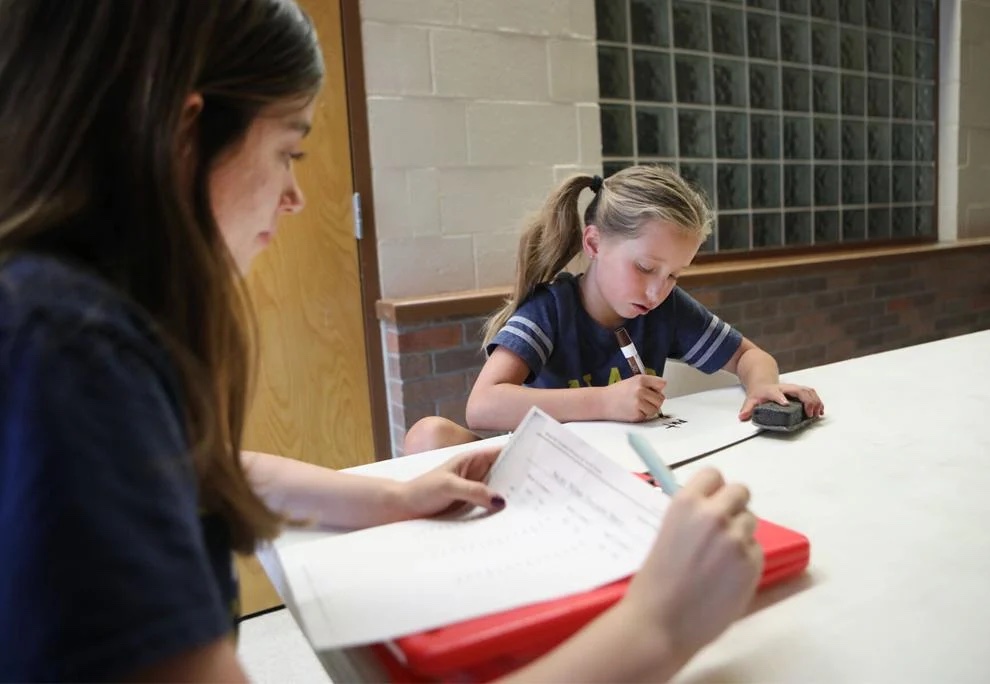
A unique environment
Beall-Caska said camp is a unique and fun way to get children excited about reading and learning and build their confidence by providing a space to find community.
“[Camp] really builds that community and helps them see, ‘I’m not the only one who needs this,’” Beall-Caska said. “I think building up their confidence by surrounding them with other students who are also experiencing the same difficulties and really highlighting what they’re good at is what makes it really beneficial for the clients coming in.”
Beall-Caska’s next big goal is to make the camp interdisciplinary so other professors, mental health professionals, clinical students or preservice teachers can work with the camp, because, according to her, “it takes a village, and it’s not just one profession who is going to help these kids.”
If the camp gains more attention, it can eventually expand and support more children and disciplines in and around Flagstaff.
See the original article on the Arizona Daily Sun.
